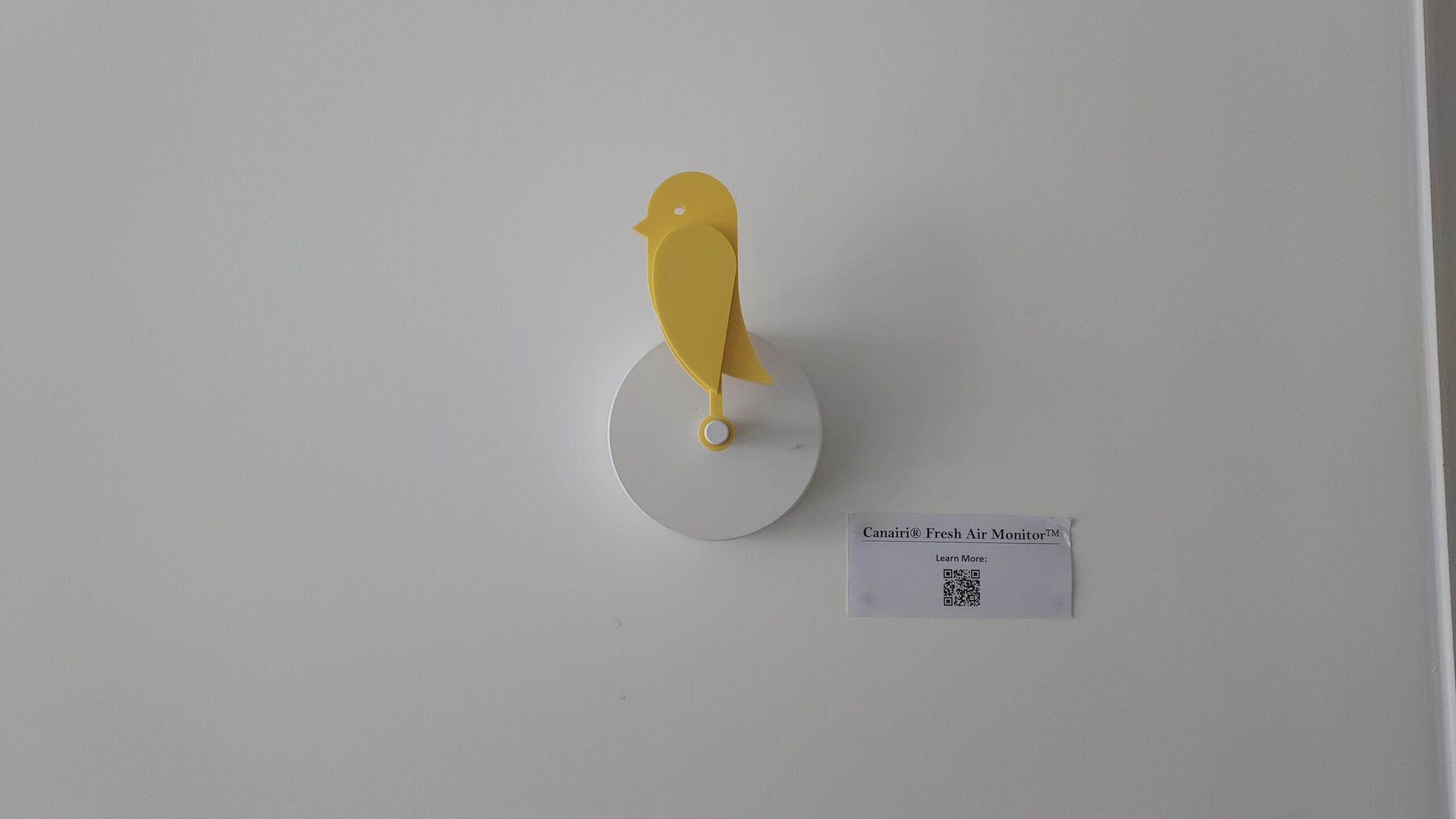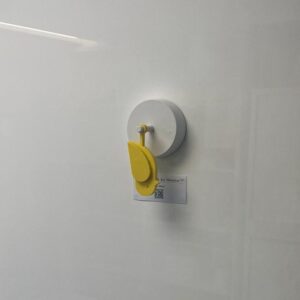
Visualizing Indoor Air Quality: Canairi – The Canary of the Meeting Room
Clean Air Network(CAN) is dedicated to advancing efforts to enhance indoor air quality. By exploring innovative products from around the world, like the award-winning Canairi air monitor, CAN is in the process of gamifying the experience of the way people interact with their indoor environments.
Back in the day, mineworkers would bring a canary(yellow bird) with them in the coal mine to detect toxic gasses. When the bird fainted, it was time to get out. ‘Canairi’ works exactly the same way – but in the modern indoor area.
Canairi employs a built-in CO₂ sensor to monitor air quality in the indoor environment. When CO₂ levels rise above safe thresholds, the bird-shaped monitor drops, serving as a friendly reminder to ventilate the space. In environments with high CO2, people may feel more tired or experience difficulty staying alert. This can result in reduced productivity and concentration levels. With the help of the Canairi you can keep the CO2 levels in check and have a more lively and interactive indoor environment. This approach can create a healthier indoor air quality by encouraging timely action.


Join us in our mission to transform indoor air quality management into an engaging and accessible experience for all. For more information, you can contact us at info@hongkongcan.org or call us at 39710106.

FAQ
Why only CO2 is measured?
CO2 serves as a crucial indicator of indoor ventilation, as inadequate ventilation often leads to its accumulation. Insufficient airflow not only allows for the entrapment of bacteria but also facilitates the rapid spread of infectious diseases. Moreover, elevated levels of CO2 indoors can hinder concentration and productivity, particularly in meeting rooms, consequently diminishing work efficiency. While there are other indoor air pollutants like particulate matter (PM), CO2 is preferred for measurement due to its more immediate impact on human cognitive functions. Hence, monitoring CO2 levels provides valuable insights into the quality of indoor air and its effects on individuals.
What should one do when the birdie is down?
When indoor carbon dioxide levels rise, the birdie will face downward. To revive its energy, open windows and doors to enhance ventilation, reducing the indoor CO2 concentration. This revitalization will allow the birdie to stand up again.
Would opening the window bring in even worse air in the room?
While it’s true that opening windows can introduce outdoor air pollutants, the recommendation to do so is primarily focused on improving indoor air quality through increased ventilation and dilution of indoor pollutants. The key is to find a balance by considering the duration of window opening to allow for adequate room ventilation. By managing the timing and duration, the benefits of fresh air exchange can be maximized while minimizing the potential impact of outdoor pollutants.

